Recent Articles
Popular Makes
Body Types
2019 Mazda MX-5 Miata Road Test and Review
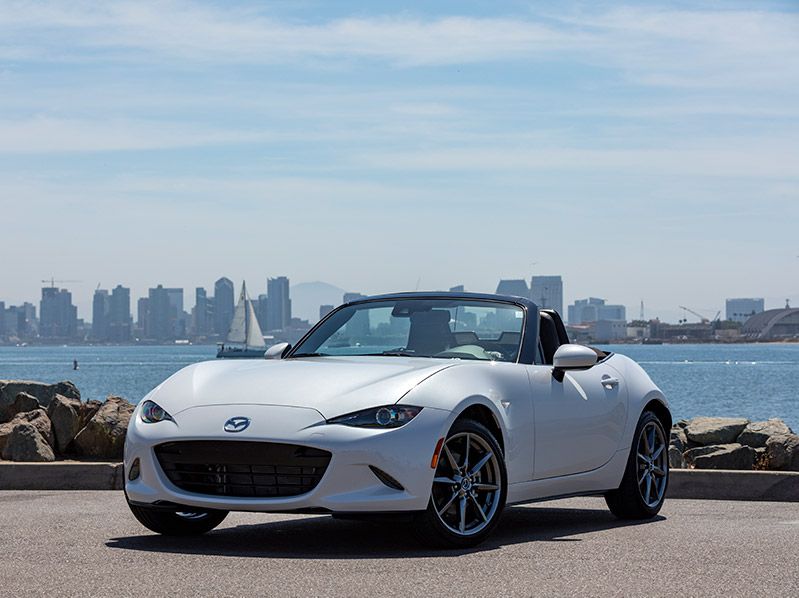
2019 Mazda MX 5 Miata hero ・ Photo by Mazda
The 2019 Mazda MX-5 Miata has charm by the truckload. Not that the previous year’s version was lacking in this respect, but the 2019 model receives some updates that all add up to create what is the best MX-5 there’s ever been.
This model year’s revisions don’t include the usual and predictable mid-cycle styling facelift. There are a couple of cosmetic additions, but the MX-5 has taken another step in its evolution, with most of the changes benefitting the driver. Things like the shape of the pistons, the size of the valves, and the action of the manual transmission have all gone under the microscope and emerged better than before. Let’s go into greater detail.
Pricing
As of this writing, Mazda had still not released pricing information on the 2019 Mazda MX-5 Miata soft-top range. For a rough idea, the 2018 version in entry-level Sport trim and with a manual transmission begins at $26,190. So expect something a little above that. The other two trims are Club and Grand Touring.
The RF (retractable fastback) version only comes in Club and Grand Touring guises, with the 2019 car starting at $33,240. At this point, we would normally compare this price with rivals, but the MX-5 doesn’t really have any. The closest two-seat convertible with serious driving talents is the 2019 Nissan 370Z Roadster, which costs around $43,000 and is getting old.
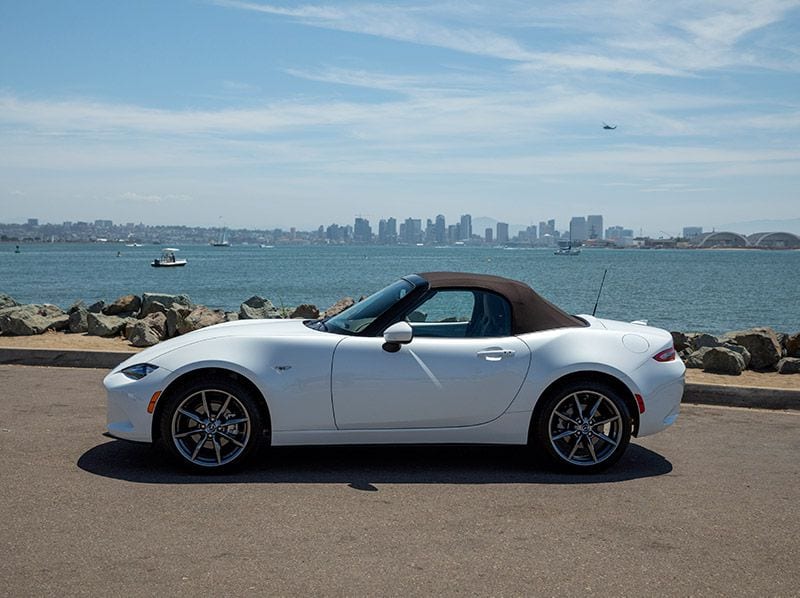
Photo by Mazda
Equipment
The MX-5 Miata offers a choice of a manually operated fabric top or the RF’s partially retractable hardtop. The latter adds a few pounds, but it’s not a deal-breaker, while the added security and protection from the elements might be worth that weight. The base Sport trim has a rearview camera, HD radio, and 16-inch alloy wheels. Anyone looking for a second car as a fun runabout might be happy right there.
The Club trim gains a few enthusiast-leaning additions (like a limited-slip rear differential and a sport suspension), 17-inch alloy wheels, and a Bose audio system upgrade. The Grand Touring makes those enthusiasts' parts optional, replacing them with luxurious touches such as leather upholstery, heated seats, navigation, and rain-sensing wipers.
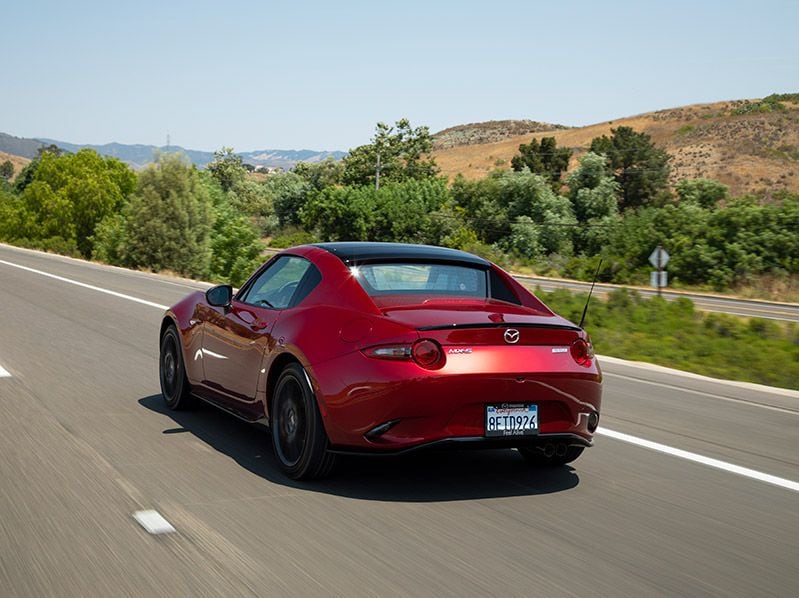
Photo by Mazda
Options
The smooth-shifting manual transmission would be our choice, but anyone opting for the automatic transmission at least has shift paddles mounted on the steering wheel to play with. Packages covering blind-spot monitoring with a rear cross-traffic alert, a lane-departure warning, and “smart city brake support” are available in the lower two trims and standard in Grand Touring, which also has traffic sign recognition.
The Club trim with the manual transmission is eligible for upgraded Brembo brakes, BBS wheels, and heated Recaro seats. The Grand Touring may also be ordered with the Club’s limited-slip rear differential, shock tower brace, and sportier Bilstein suspension. A cloth roof in a stylish brown is a new 2019 option for the Grand Touring soft-top.
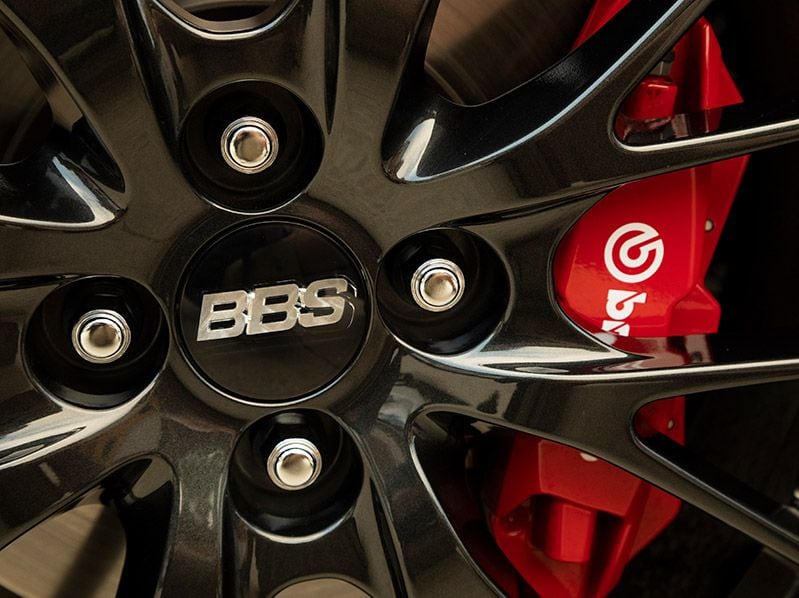
Photo by Mazda
Engine and Fuel Economy
There's no turbocharging here — it’s not necessary. Mazda’s revisions to the MX-5 Miata's 2.0-liter four-cylinder engine include redesigned pistons, lighter connecting rods, new valves, and a re-balanced crankshaft. Improvements have also been made to the engine’s “breathing.” These changes bring more power: 181 horsepower and 151 lb-ft of torque (compared with 2018’s 155 hp and 148 lb-ft). The transmissions have also been upgraded, although both manual and automatic units still contain six forward gears.
As well as greater muscle, the 2019 MX-5 is thriftier with fuel, achieving 26 mpg in the city, 34 mpg on the highway and 29 mpg combined with the manual transmission, or 26 city/35 highway/29 combined with the automatic. Last year’s model drank slightly more gas on the highway. The MX-5 continues to be sold only with rear-wheel drive.
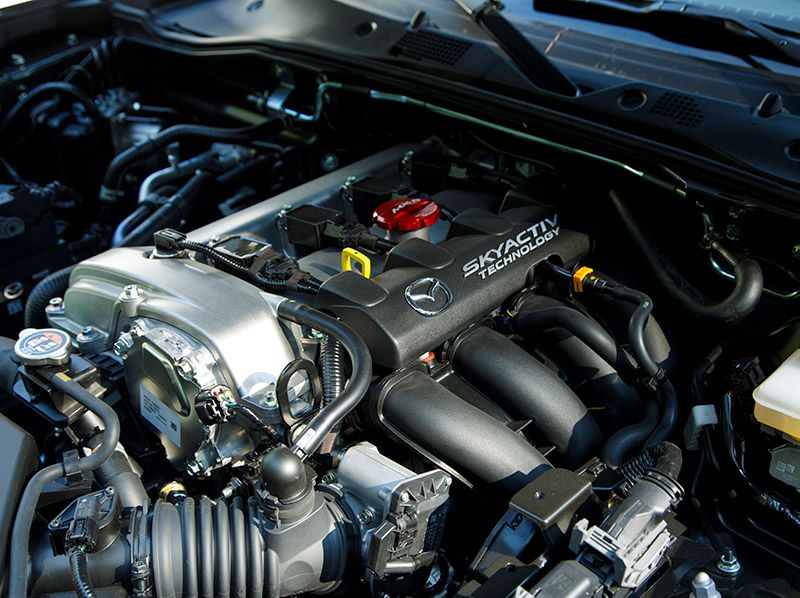
Photo by Mazda
Handling
Welcome to the MX-5’s greatest strength. It’s all about balance. Like the even weight distribution from front to rear, the amount of power in relation to the rear-drive chassis, and the suppleness of the suspension in relation to the precision of the steering. No single aspect is too dominant. This formula makes the MX-5 agile and tactile, perfectly controllable without ever being boring.
The standard suspension is set up on the forgiving side. There are two good reasons for this. One is that the less frequented and therefore less well-maintained roads are bearable, even desirable. And whenever weight transfers to the rear under acceleration, the levels of suppleness can help with grip and traction.
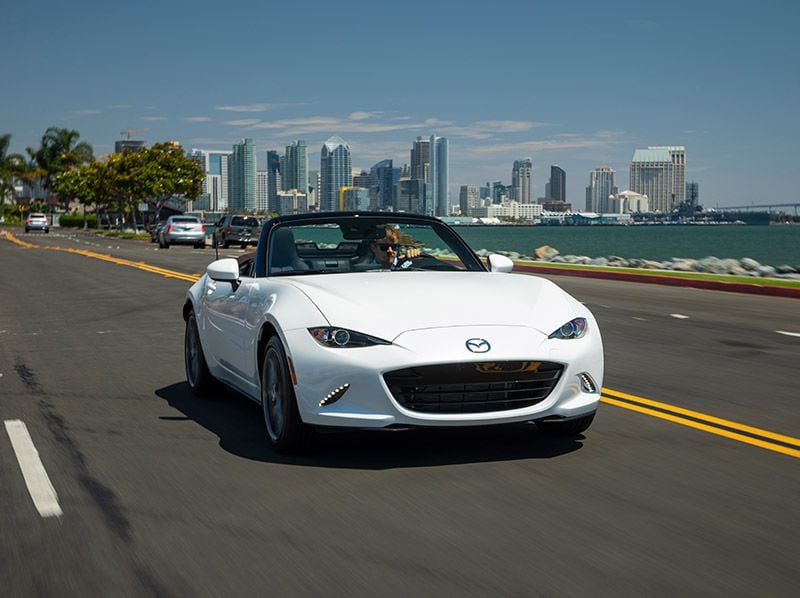
Photo by Mazda
Performance
In terms of out-and-out speed, the MX-5 is no time-warping rocket. Mazda doesn’t quote a standstill-to-60 mph time, but 5.5 seconds is feasible. That’s a respectable figure rather than an impressive one. The thrills are found in a different way. This year's engine revisions have had a sweetening effect. Even from low revs in third gear, it will accelerate without a hint of grumpiness or hesitation.
It’s good that the MX-5 isn’t over-powered. Mazda’s engineers can keep the chassis as neutral as possible, favoring neither understeer nor oversteer. This is also quite a light car — 2,339 pounds with the soft top and manual transmission — so the amount of punch makes itself felt well enough.
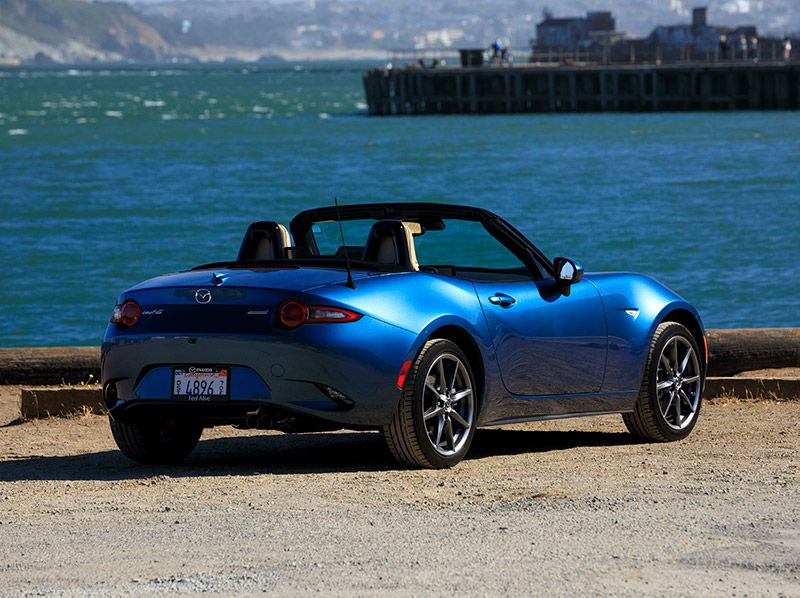
Photo by Mazda
Exterior Design
Despite the tweaks under the hood, the MX-5 Miata's sheetmetal is unchanged for 2019. There are new designs for the 16-inch and 17-inch alloy wheels and that’s about it. Nevertheless, this generation of MX-5 is sleek and stylish. One thing that may not be obvious just by looking at the car is how subtly thrilling it is to sit in the driver’s seat and see those raised fenders on each side.
The RF comes with the power-folding hardtop that sits on a couple of “flying buttresses” acting as rear pillars. They reduce rear three-quarter vision (blind spot monitoring is a boon here), but they also give the car a cool coupe-like appearance.
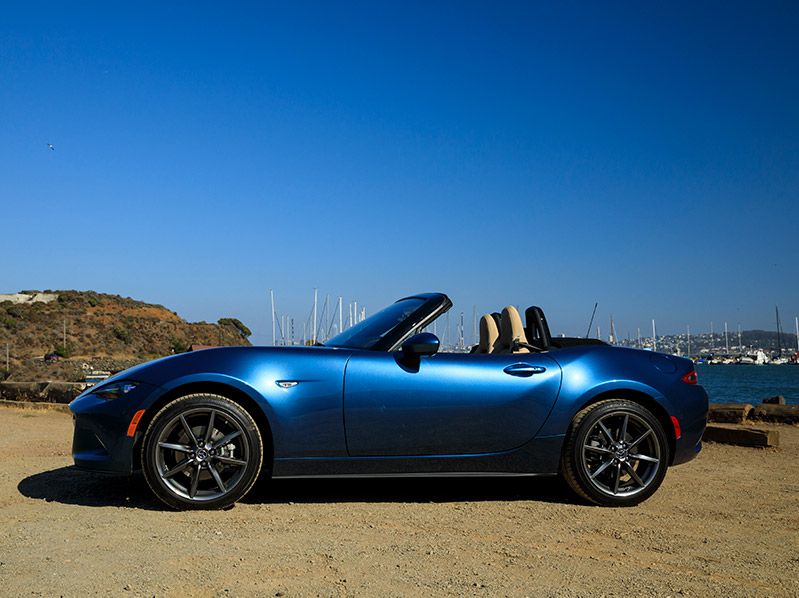
Photo by Mazda
Interior Design
The MX-5’s cabin doesn’t really need to be anything more than functional, but it’s also agreeable. The important thing is that the steering wheel now adjusts for reach as well as height, and the gear shift lever is right where it should be. The seats are positioned so that the driver’s rear end is close to the rear axle, so there’s a great seat-of-the-pants feel to the driving experience.
Naturally, there’s not a lot of occupant space, but a six-footer could still consider owning one. The plastics used for the dashboard and center console are mostly hard to the touch, yet their textures are pleasant enough. For the money, we have no complaints.
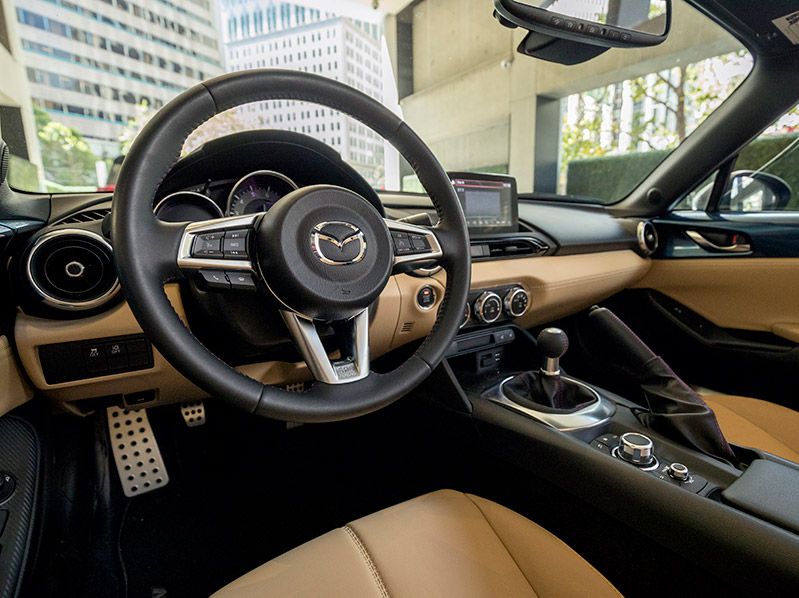
Photo by Mazda
Comfort and Cargo
Underlying everything is the suspension tuning, which is set relatively soft for a sports car. The seats are also well-shaped and well-cushioned, making long trips perfectly bearable. But there’s also an upside that’s perhaps less obvious.
The roads less traveled and therefore less frequently resurfaced are still worth considering for an MX-5 driver. The suspension absorbs surface imperfections like kitchen rolls absorb blue liquid in TV commercials. Even in those tricky bumpy corners, the MX-5 remains unflappable. There’s only enough trunk space (4.6 cubic feet) for a couple of weekend bags. But that’s OK. Who needs lots of clothes when you’re having this much fun?
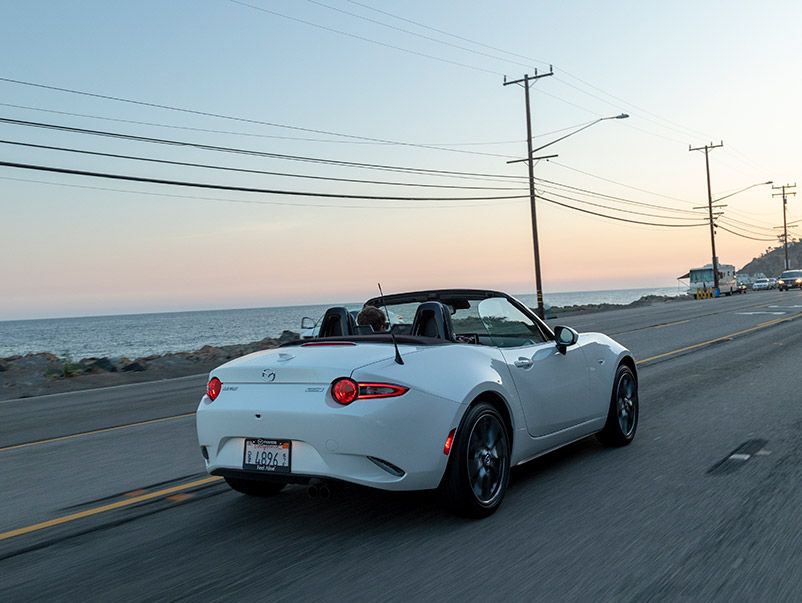
Photo by Mazda
Final Thoughts
Firstly, it’s great that a machine this thrilling can still have the fuel economy of a frugal compact car. Secondly, the MX-5 is the anti-crossover — it sits low, has little practical value other than transporting a maximum of two people plus some luggage, and feels absolutely wonderful. Where most crossovers insulate their occupants, this two-seat roadster engages them, communicates with them, and thrusts them into the ever-enjoyable present moment full of sensations.
The MX-5 remains a perfect introduction to the joys of rear-wheel drive, with predictable behavior and not enough power to get a rookie into trouble. There aren’t enough cars at this price with so much appeal. Thank goodness the 2019 Mazda MX-5 Miata exists.
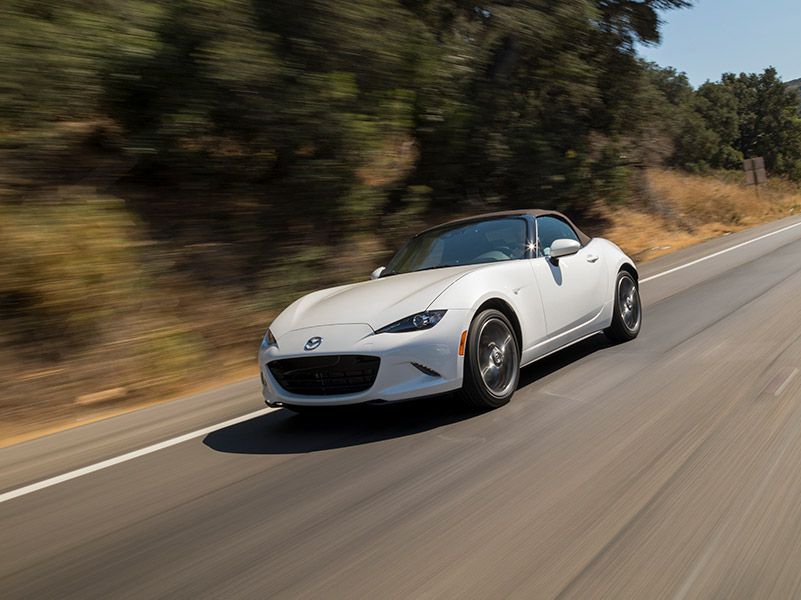
Photo by Mazda